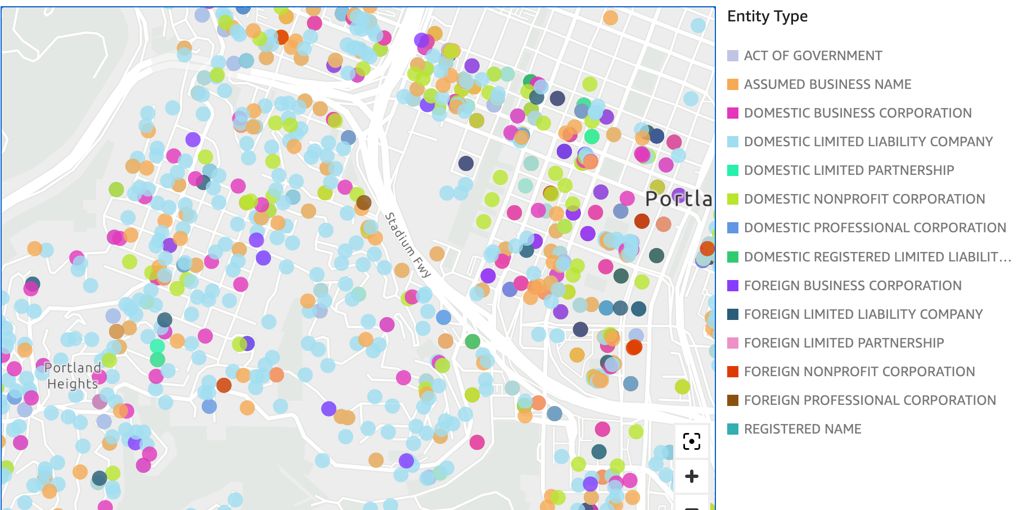AWS Public Sector Blog
Category: Research
Thailand’s Higher Education, Science, Research, and Innovation Ministry collaborates with AWS to boost innovation and upskill public servants
AWS today signed a Memorandum of Understanding (MOU) with Thailand’s Ministry of Higher Education, Science, Research, and Innovation (MHESI) to boost innovation using cloud technology. Through this collaboration, AWS will support MHESI to identify pilot workloads for the ministry to start migrating to the AWS Cloud. MHESI will also use AWS training programs to upskill employees on AWS Cloud skills across over 200 education institutions and over 20 MHESI-managed research and education agencies across Thailand by early 2026.
How researchers can meet new open data policies for federally-funded research with AWS
Learn how federal agencies are enacting new public access policies for data sharing, and how you can use AWS to prepare your research to meet these new data management and sharing requirements.
34 new or updated datasets on the Registry of Open Data: New data for land use, Alzheimer’s Disease, and more
The AWS Open Data Sponsorship Program makes high-value, cloud-optimized datasets publicly available on AWS. This quarter, AWS released 34 new or updated datasets from Impact Observatory, The Allen Institute for Brain Science, Common Screens, and others, which are available now on the Registry of Open Data in the following categories.
How to optimize costs for grant-based research projects with AWS
As the number of research workloads in the cloud grows, researchers face challenges in managing strict budgets with unpredictable workloads and fluctuating needs. Researchers must be frugal with time and money to further their goals in performing cutting-edge and important research. AWS provides many methods for effective cost management that can support organizations in their efforts to optimize the use of grant-based funds.
Making weather forecasts more accessible using serverless infrastructure and open data on AWS
As part of the Registry of Open Data on AWS, AWS invited Alexander Rey, creator of Pirate Weather, to share how AWS technologies and open data are supporting his efforts to provide a no cost and open weather forecast API.
Pediatric cancer researchers use AWS to accelerate Cancer Moonshot
Earlier this year, US President Joe Biden set a goal to end cancer as we know it by improving prevention, screening, diagnosis, and treatment. To answer this call, AWS is expanding its ongoing work with the Children’s Brain Tumor Network (CBTN). Together, AWS and the CBTN will enable researchers and clinicians to share and analyze medical record, imaging, genomic, and other data in near real-time to speed development of new therapies for pediatric brain cancers.
Understanding wildfire risk in a changing climate with open data and AWS
The First Street Foundation, a nonprofit research and technology group, is committed to making climate risk information accessible, simple to understand, and actionable for individuals, governments, and industry. As part of the Amazon Sustainability Data Initiative (ASDI), AWS invited Dr. Ed Kearns, the chief data officer of First Street Foundation, to share how AWS technologies and open data are supporting their mission to provide accurate and up-to-date information on climate related risks.
Announcing the 2022-2023 AWS IMAGINE Grant winners
At re:Invent 2022, AWS announced the winners of this year’s AWS IMAGINE Grant. Winners receive not only unrestricted funding, but also access to training and expert technical guidance. Although they represent diverse mission areas, each organization is committed to innovating with the cloud, using data to fuel their missions, and scaling access to vital services through cloud-enabled, digital tools. Meet this year’s winning nonprofits.
NASA and ASDI announce no-cost access to important climate dataset on the AWS Cloud
To assist the science community in conducting studies of climate change impacts at local to regional scales, NASA created the NASA Earth Exchange (NEX) Global Daily Downscaled Projections (GDDP) dataset, or NEX-GDDP-CMIP6. This dataset is expected to enhance public understanding of possible future climate patterns at the spatial scale of individual towns, cities, and watersheds. It provides a set of global, high resolution, bias-corrected climate change projections that can be used to evaluate climate change impacts on processes that are sensitive to finer-scale climate gradients and the effects of local topography on climate conditions. As part of the Amazon Sustainability Data Initiative (ASDI), this dataset is available at no cost on the Registry of Open Data.
Visualize data lake address datasets on a map with Amazon Athena and Amazon Location Service geocoding
Many public sector customers in government, healthcare, and life sciences have data lakes that contain addresses (e.g., 123 Main Street). These customers frequently ask how they can quickly visualize these addresses on a geographic map to get a more intuitive understanding of how these addresses are distributed. In this post, learn how to use Amazon Athena and Amazon Location Service to perform ad hoc geocoding on an example dataset and visualize these geocoded addresses on an Amazon QuickSight map.









